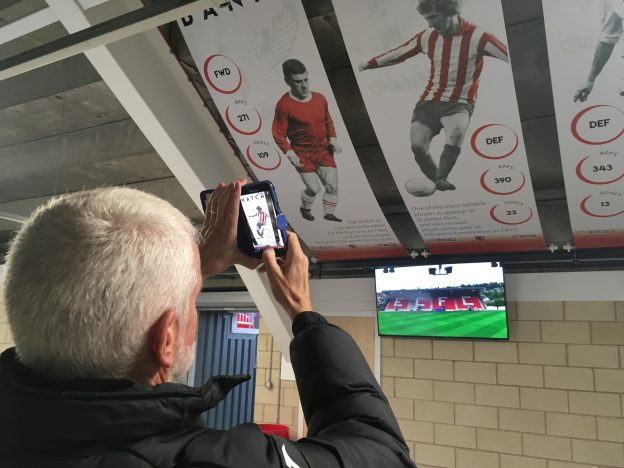The main achievement of the HLF-funded Exeter City Football Club Museum project has been the creation of a sport heritage museum at St James Park, home to Exeter City Football Club (2019). The project, a collaboration between Exeter University and Exeter City Football Trust and Club, is led by Gabriella Giannachi, an expert in performance art and new media documentation and preservation in the museum context. Gabriella wanted to utilise research methodologies developed with Tate, the San Francisco Museum of Modern Art, LIMA and RAMM, and adapt them in the context of sport heritage. Will Barrett, a researcher at Exeter University, has been the project co-ordinator, and Club and Trust Directors Martin Weiler, Paul Farley and Elaine Davies have acted as members of the project management team that regularly meets to discuss progress and assess the stream of donations the Club has been receiving since announcing it would set up a museum to look after its heritage. Since 2016, over 30 undergraduate Exeter University student volunteers, experts in conservation, art and design, heritage, and photography, as well as a large number of fan volunteers, have contributed to the project.
The setting up of a museum is the culmination of a five-year collaboration which started in 2013. At that time, Gabriella was working with Tate and RAMM to create platforms that would allow people to encounter their collections outside of the museum. Gabriella wanted to test the Timetrails platform she developed with Will, 1010 Media and RAMM in a different context. Tom Cadbury, Assistant Curator for Antiquities at RAMM, pointed out that the Club had a lot of heritage and introduced them to Paul who was already at that time looking after the heritage there. With some seed funding from HEIF, a number of trails about the Club were created and tested, and they soon realised that what they really wanted was to collect, digitise, preserve and share the heritage at the club to unearth its rich and valuable history.
A pilot website called The Grecian Archive was developed to this extent by the Digital Humanities Lab at the University. The popularity of the site soon encouraged the team to bid to the Arts and Humanities research Council (AHRC) for being part of the Being Human Festival in 2016 to employ the professional football photographer and FIFA consultant Peter Robinson, who then documented the Old Grandstand, which was about to be demolished. At the same time, they also bid to HLF so that they could start to catalogue the heritage and crowdsource missing elements in the Club’s history through a series of heritage gathering events. These led to the documentation of more than 80 fans’ and players’ memories about the Club’s heritage, looking specifically at the Old Grandstand. These interviews led to the production of two long films, a set of 3D scans (also produced by the Lab), three trails, and, through a subsequent HLF award, three medium-length films, two temporary exhibitions and six permanent exhibitions. The latter include the recently launched Legends Wall, running along the jungle path; A Chronology and Hall of Fame in the brand new Stagecoach Adam Stansfield stand; and a bespoke museum room, which has a number of displays and is very popular on tours. A film shot by the HLF South West Development Officer capturing this amazing story will be launched soon.

